#Biochemistry
Text
#finn hudson#pro choice#pjo fandom#tsukishima kei#ron swanson#grunge style#newtmas#biochemistry#sad poem#he tian#black literature#waifcore#letras#foo fighters#moths
130 notes
·
View notes
Text
#beefy#ranboo fanart#do kyungsoo#finn hudson#twitch#sabriel#biochemistry#he tian#wine#justin bieber#foo fighters#miles teller#simblr#republicans
127 notes
·
View notes
Text
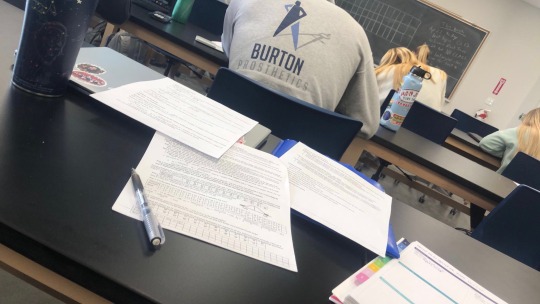
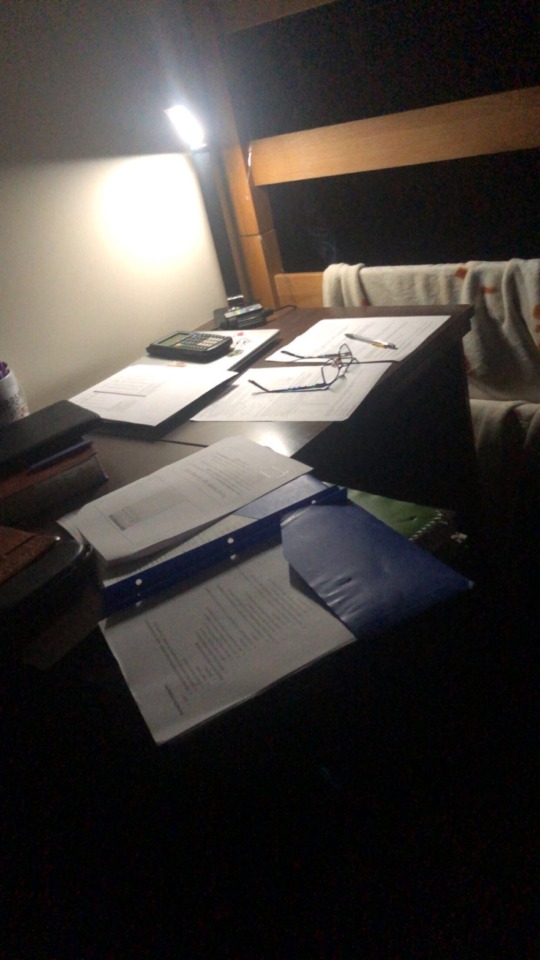
None of my teachers are abiding by dead week, but my insomnia is finally on the same page with me so all nighters are easy. I’m confident in my stats class, and will be better for my bio class once I get through the up coming quizzes
#college#student#chemistry#studyblr#biology#biochemistry#study aesthetic#study desk#study motivation#romanticizing school#romanticizing stem#romanticizing science#romanticizing college#stem#stem student#stem academia#stem aesthetic#stem studyblr#stemblr#study blog#studyspo#studying#stress#romanticizing finals#finals#university
34 notes
·
View notes
Text
"A team of researchers at Washington University in St. Louis has developed a real-time air monitor that can detect any of the SARS-CoV-2 virus variants that are present in a room in about 5 minutes.
The proof-of-concept device was created by researchers from the McKelvey School of Engineering and the School of Medicine at Washington University...
The results are contained in a July 10 publication in Nature Communications that provides details about how the technology works.
The device holds promise as a breakthrough that - when commercially available - could be used in hospitals and health care facilities, schools, congregate living quarters, and other public places to help detect not only the SARS-CoV-2 virus, but other respiratory virus aerosol such as influenza and respiratory syncytial virus (RSV) as well.
“There is nothing at the moment that tells us how safe a room is,” Cirrito said, in the university’s news release. “If you are in a room with 100 people, you don’t want to find out five days later whether you could be sick or not. The idea with this device is that you can know essentially in real time, or every 5 minutes, if there is a live virus in the air.”
How It Works
The team combined expertise in biosensing with knowhow in designing instruments that measure the toxicity of air. The resulting device is an air sampler that operates based on what’s called “wet cyclone technology.” Air is sucked into the sampler at very high speeds and is then mixed centrifugally with a fluid containing a nanobody that recognizes the spike protein from the SARS-CoV-2 virus. That fluid, which lines the walls of the sampler, creates a surface vortex that traps the virus aerosols. The wet cyclone sampler has a pump that collects the fluid and sends it to the biosensor for detection of the virus using electrochemistry.
The success of the instrument is linked to the extremely high velocity it generates - the monitor has a flow rate of about 1,000 liters per minute - allowing it to sample a much larger volume of air over a 5-minute collection period than what is possible with currently available commercial samplers. It’s also compact - about one foot wide and 10 inches tall - and lights up when a virus is detected, alerting users to increase airflow or circulation in the room.
Testing the Monitor
To test the monitor, the team placed it in the apartments of two Covid-positive patients. The real-time air samples from the bedrooms were then compared with air samples collected from a virus-free control room. The device detected the RNA of the virus in the air samples from the bedrooms but did not detect any in the control air samples.
In laboratory experiments that aerosolized SARS-CoV-2 into a room-sized chamber, the wet cyclone and biosensor were able to detect varying levels of airborne virus concentrations after only a few minutes of sampling, according to the study.
“We are starting with SARS-CoV-2, but there are plans to also measure influenza, RSV, rhinovirus and other top pathogens that routinely infect people,” Cirrito said. “In a hospital setting, the monitor could be used to measure for staph or strep, which cause all kinds of complications for patients. This could really have a major impact on people’s health.”
The Washington University team is now working to commercialize the air quality monitor."
-via Forbes, July 11, 2023
-
Holy shit. I know it's still early in the technology and more testing will inevitably be needed but holy shit.
Literally, if it bears out, this could revolutionize medicine. And maybe let immunocompromised people fucking go places again
Also, for those who don't know, Nature Communications is a very prestigious scientific journal that focuses on Pretty Big Deal research. Their review process is incredibly rigorous. This is an absolutely HUGE credibility boost to this research and prototype
#covid#covid 19#pandemic#plague#rsv#influenza#the flu#science and technology#medical research#medical technology#biochemistry#immunology#good news#hope#hope posting
6K notes
·
View notes
Text
OKAY THIS ARTICLE IS SO COOL
I'm going to try to explain this in a comprehensible way, because honestly it's wild to wrap your head around even for me, who has a degree in chemistry. But bear with me.
Okay, so. Solids, right? They are rigid enough to hold their shape, but aside from that they are quite variable. Some solids are hard, others are soft, some are brittle or rubbery or malleable. So what determines these qualities? And what creates the rigid structure that makes a solid a solid? Most people would tell you that it depends on the atoms that make up the solid, and the bonds between those atoms. Rubber is flexible because of the polymers it's made of, steel is strong because of the metallic bonds between its atoms. And this applies to all solids. Or so everybody thought.
A paper published in the journal Nature has discovered that biological materials such as wood, fungi, cotton, hair, and anything else that can respond to the humidity in the environment may be composed of a new class of matter dubbed "hydration solids". That's because the rigidity and solidness of the materials doesn't actually come from the atoms and bonds, but from the water molecules hanging out in between.
So basically, try to imagine a hydration solid as a bunch of balloons taped together to form a giant cube, with the actual balloon part representing the atoms and bonds of the material, and the air filling the balloons as the water in the pores of the solid. What makes this "solid" cube shaped? It's not because of the rubber at all, but the air inside. If you took out all the air from inside the balloons, the structure wouldn't be able to hold its shape.
Ozger Sahin, one of the paper's authors, said
"When we take a walk in the woods, we think of the trees and plants around us as typical solids. This research shows that we should really think of those trees and plants as towers of water holding sugars and proteins in place. It's really water's world."
And the great thing about this discovery (and one of the reasons to support its validity) is that thinking about hydration solids this way makes the math so so so much easier. Before this, if you wanted to calculate how water interacts with organic matter, you would need advanced computer simulations. Now, there are simple equations that you can do in your head. Being able to calculate a material's properties using basic physics principles is a really big deal, because so far we have only been able to do that with gasses (PV=nRT anyone?). Expanding that to a group that encompasses 50-90% of the biological world around us is huge.
#science#stem#science side of tumblr#stemblr#biology#chemistry#scientists#biochemistry#studyblr#physics#nature
6K notes
·
View notes
Text
Okay, look, I've been in college for two years and my Biology professor has pretty significantly rooted this educational science game called Labster into her course.
I was not expecting to be playing Portal all day for school.
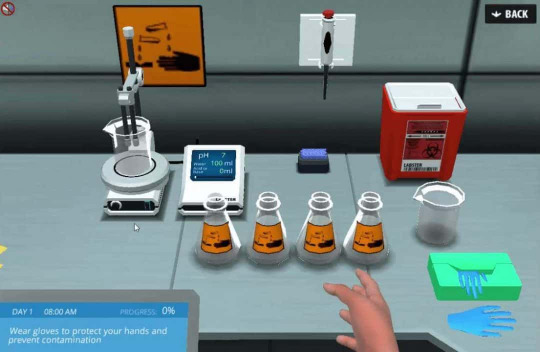
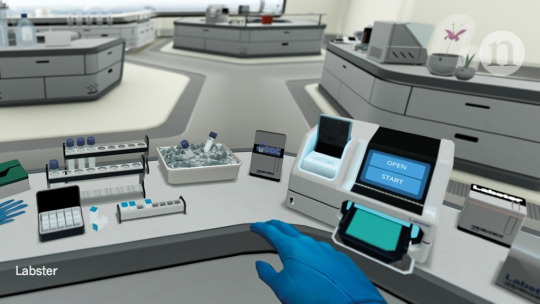
Yeah, this is a full, 360 sci-fi free roam lab environment that you can pretty much do whatever you want in. You know those cruddy flash game experiments you used to do in middle school? Those are a thing of the past.
And check this: the entire lab is being run by this super cool AI droid named Dr. One

She floats around and directs you around the lab depending on the lesson you're taking and sounds eerily similar to GLaDOS. It turns out that Dr. One also has a lore page and that she was created originally for "unethical purposes."
Also, this environment is extremely detailed and even runs shaders and ambient occlusion in your web browser.
That's pretty nuts, considering the only time we ever see these things are built into genuine video games, not a web browser lab. It runs incredibly smoothly on my GTX 1050.
This is insanely impressive and I actually enjoyed my homework today. 10/10, would play this in my free time.
#gaming#indie games#game development#education#biology#science#science side of tumblr#biochemistry#college#college tips#university#student#studying#college life#student life
2K notes
·
View notes
Text
adhd study affirmations + tips to stray from discouragement
by a stem student with adhd.
you’re not always going to be consistent. you’re not always going to be motivated. you’re not always going to be efficient. and that is okay.
edit : thank you so much to whoever blazed this post. It means the world to me.
and the fact that you even got this far is an accomplishment in and of itself. In this line of work, people aren’t always the kindest to neurodivergent people especially since our symptoms can often hinder our performance academically.
if you’re good to go after reading the above, I’ve also made a post regarding adhd study tips that I haven’t seen anywhere else. (Part 2 is here!) But, if you’re burned out like me, feel free to keep reading.
honestly, these might serve a bit more as reminders because they’re kinda simple but even I needed this, so, here we go.
do not seek advice from anyone neurotypical unless it genuinely helps you. I cannot tell you the amount of time and tears I could have saved if I just considered the fact that just because popular self-improvement tips or study techniques didn’t work for me, it doesn’t mean I’m stupid or useless. It simply means our brains isn’t motivated by the same things neurotypical ones are, and therefore a lot of popular self-improvement videos or study tips aren’t going to work for you because 90% of the time, they’re not designed to work for neurodivergent people. So if you’d like to seek help in this area, look for tips and videos that ARE for neurodivergent people.
you might experience burnout a lot more than others. again, that is fine. if this doesn’t apply to you, great! Feel free to skip to the next tip/affirmation. If this does apply to you, read this carefully; if you’ve had any sort of streak in studying right now, chances are you know at least a portion of your studies were led purely on interest, curiosity or even novelty, as these are what keep us engaged in our studies. Knowing this, it is natural for you to experience burnout more frequently than others due to the possible hyperfixations that have been forming around your work. If you get burned out, please remember to take a break for a day and make sure it is efficient. Like your studies, your breaks are the key to having efficient study sessions in the future. So please treat yourself, especially if you’ve been working extra hard!
do not admire studious fictional characters unless it genuinely helps you or they too are neurodivergent. I know this technically could have been thrown in with tip number 1 but I felt like this tip alone is so important, because nowadays I see a lot of study tips with the title, ‘how to study like (insert studious fictional character here)’ and when I look at the post it kinda repeats the same few study tips I see all the time like ‘stay organized’ or ‘time block your day’ and I feel like admiring fictional characters who do things that don’t work for you can be damaging for your mental health, because we’re already told by neurotypical people all around us that we’re slow or lazy just because we don’t do things the way they do, and I think idolizing neurotypical people that make us feel bad at the end of the day just further promotes that kind of toxic thinking.
expect that a routine/schedule/technique that has been working for a while now may not continue to work in the future. things will always have to be new for us to be interested or engaged, that being said, if you expect this in the future you won’t be frustrated with yourself because you already had this in mind. It doesn’t mean you’re not smart. It doesn’t mean you’re lazy. It doesn’t mean you’re useless. It just means that you’ve done what you could, and now it’s time to move on to another routine/schedule/technique.
keep doing the things you love alongside work. I find that because our symptoms may cause us to fall behind on our studies, we tend to neglect our other needs as human beings just to make up for the fact that we simply do not learn or pick things up the same way neurotypical people do. Your hobbies and interests need to be part of your day, just as your studies do, even if you may take longer to learn things or remember important concepts in your studies. Neglecting your hobbies or interests can lead to even more frequent burn outs and even a relapse in depression and anxiety, so please take care of yourself and recognize that you need and deserve these things just as much as anyone else.
regularly discover what works for you on your own. here’s the thing; neurodivergent or not, no two brains work the same. Of course it is good to try out advice or tips you find online because they’re backed up by experience, but they’re backed up by that person’s experience with working with their own brain. So naturally, you need to find what works with your brain. Be open to trying everything, even the tips that are discouraged like listening to lyrical music while studying. That was the only way I learnt that this tip actually does help me at times, even when many people have said that it negatively affects your focus.
that’s all I have right now guys, I think I’m experiencing burn out or probably falling back into depression again so more than anything this also served as a reminder for me, but I really hope it also helped you guys nonetheless.
As always, tell me if you guys would like more posts like these and I’ll be happy to make more <33 please take care of yourself guys, and remember that your studies is just one aspect of your life. There are other aspects that need your care and attention too.
#science#stem#study#study hard#study motivation#studyblr#studygram#studystudystudy#biochemistry#chemistry#adult adhd#adhd stuff#adhd tips#adhd#adhd study tips#adhd brain#adhd studyblr#adhd struggles#adhd things#living with adhd#actually adhd#adhd problems
1K notes
·
View notes
Text




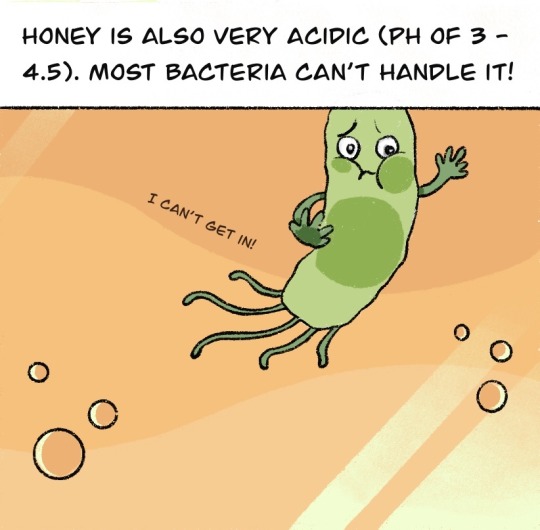
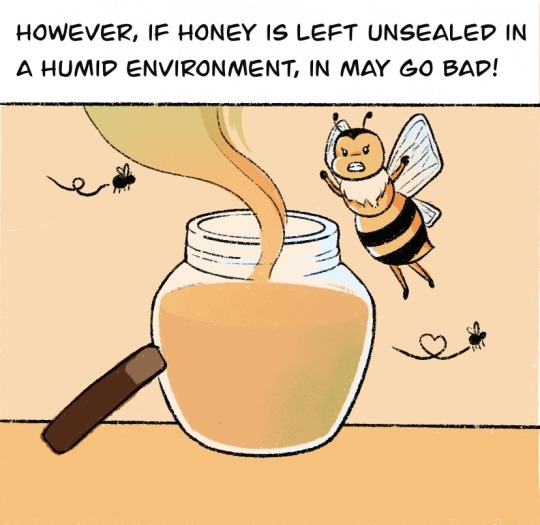

Do you know that a 3000-year-old honey was still edible? Does honey ever spoil?
#sciart#cute illustration#studyblr#sciencecommunication#biochemistry#stem education#chemistry#science#chemistry in real life#biology#food science#comics#cute comics
763 notes
·
View notes
Text


27/5/'23 › 6/40 days of productivity
probably the busiest saturday i had in a while; revised just a little in the morning, got called in for work, drove back for a coffee with a friend and then headed straight for a concert. had a few moments of reflection throughout the day, so i will call that productive. otherwise, i haven't done much.
study time: nonexistent
#studyblr#med student#med studyblr#new studyblr#study inspiration#studying#biochemistry#coffee#cofeetime#books#medicine#student#uni student#days of productivity#k moments
891 notes
·
View notes
Text
When nature performs chemical reactions to create energy-rich compounds from simple molecules, it requires energy. So far, it has not been possible to use human-made electricity to drive these biochemical processes.
Researchers at the Max Planck Institute for Terrestrial Microbiology in Marburg have achieved a breakthrough, however: they developed an artificial metabolic pathway that uses electricity to produce ATP, a biochemical energy carrier which can then be used to form energy-rich chemical compounds like starch or protein. The metabolic pathway provides a complete novel approach towards a sustainable, climate-neutral bioeconomy.
Continue Reading.
557 notes
·
View notes
Text

look at these glucose molecules, they're holding hands 😭
#yuri#sweet like sugar#maltose is love#dehydration reaction#chemistry#biology#biochemistry#gillianthecat goes back to school#hw lb#there even an 'ohh' moment!#(the H2O between them that breaks off)#🥰#from my textbook
425 notes
·
View notes
Text
I'm just trying to analyze some microscopy experiments I did but it looks like I accidentally peeped the horror
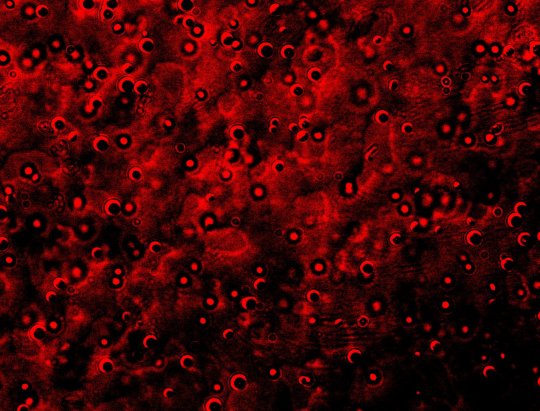
480 notes
·
View notes
Text

I just thought everyone would like this. The “default” human in my biochem class was a female body. It’s something so small but this Kinda thing matters. It’s so common that a male body is shown as the default when studying biology and anatomy, so it’s refreshing to recognize the inherent bias.
#feminism#female represention#biology#women in stem#biochem#biochemistry#anatomy#stem#stem major#womens rights#bio#progress#science#hopefem#hope tag
934 notes
·
View notes
Text

“And now that you don't have to be perfect, you can be good.”
— John Steinbeck
#original#stem academia#studyblr#study motivation#coffee#chaotic academia#books#books & libraries#problematicprocrastinator#heygather#heytess#durhamstudies#heydilli#adelinestudiess#chazzastudiesalevels#myhoneststudyblr#meestudies#linksstudyblr#bioblr#biochemistry#uniblr#indian studyblr#desi#100 dop#productivity#heycoral#studyvan#heyaltin#hey saher#heypeachblossom
454 notes
·
View notes
Text
With the fast fashion industry… how it is… finding sustainable ways to make fabric is super important. Fibers from synthetic fabrics make up 35% of the microplastics that make their way to the ocean. Natural fibers sourced from plants or animals are much more environmentally sound options, including silk.
Currently, the only way to get natural silk on a large scale is to harvest it from silkworms. You’ve probably heard about the strength and durability of spider silk (it is 6x stronger than Kevlar!) but as of yet there hasn’t been a good way of getting it. Raising spiders the way people do silkworms isn’t really an option. Spiders need a lot of room to build their webs compared to silkworms, and individual spiders don’t produce that much silk. Plus, when you put a whole bunch of spiders in captivity together, they tend to start eating each other.
Attempts to artificially recreate spider silk have also been less than successful. Spider silk has a surface layer of glycoproteins and lipids on it that works as a sort of anti-aging “skin”- allowing the silk to withstand conditions such as sunlight and humidity. But this layer has been very tricky to reproduce.
However, as scientists in China realized, silkworms produce that same kind of layer on their silk. So what if we just genetically modified silkworms to produce spider silk?
That is exactly what the researchers at Donghua University in Shanghai did. A team of researchers introduced spider silk protein genes to silkworms using CRISPR-Cas9 gene editing and microinjections in silkworm eggs. In addition to this, they altered the spider silk proteins so that they would interact properly with the other proteins in silkworm glands. And it worked! This is the first study ever to produce full length spider silk proteins from silkworms.
The applications of this are incredibly exciting. In addition to producing comfortable textiles and new, innovative bulletproof vests, silkworm generated spider silk could be used in cutting edge smart materials or even just to create better performing sutures. In the future, this team intends to research how to modify this new spider silk to be even stronger, and they are confident that “large-scale commercialization is on the horizon."
#science#chemistry#biology#sustainability#fashion#bugs#spiders#silkworms#nature#biochemistry#stemblr#genetics
4K notes
·
View notes
Text
As a biochem student no class of biomolecules fascinate me more than vitamins. Because unlike other types of biomolecules like carbohydrates and lipids, there’s really no specific structure pattern vitamins have. They’re just random molecules necessary for human survival that just don’t fit into any other category. The only thing that unites vitamins to each other is the fact we need them to live, but our bodies can’t make them.
#in all of my classes where vitamins have shown up profs are like so these are vitamins no they have nothing in common with each other and if#We didn’t need them to live no one would ever put these molecules in the same class#vitamins#Biochemistry
323 notes
·
View notes